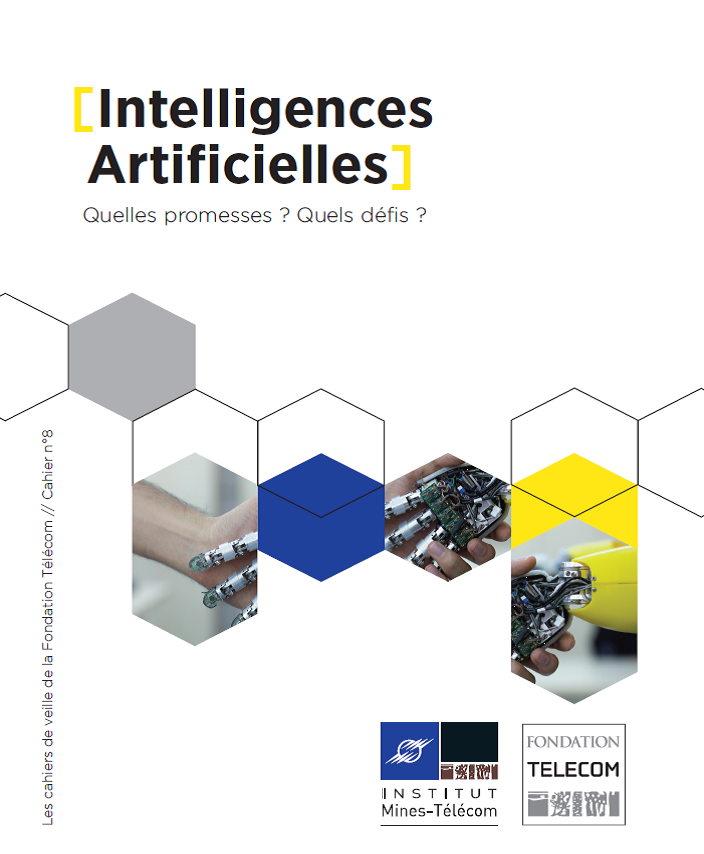23 terms to help understand artificial intelligence
Neural networks, predictive parsing, chatbots, data analysis, machine learning, etc. The 8th Fondation Mines-Télécom booklet provides a glossary of 23 terms to clarify some of the terms used in artificial intelligence (AI).
[box type=”download” align=”” class=”” width=””]Click here to download the booklet 
on Artificial Intelligence (in French) [/box]
AI winters – Moments in the history of AI, in which doubts overshadowed previous enthusiasm.
API – (Application Programming Interface), a standardized set of methods by which a software program provides services for other software programs.
Artifact – Object made by a human.
Big Data – Massive data.
Further reading: What is big data?
Bots – Algorithmic robots.
Chatbots – Conversational bots.
Cognitivism – Paradigm of cognitive science focusing on symbols and rules.
Commodities – Basic everyday products.
Cognitive agent – Software that acts in an autonomous, intelligent manner.
Cognitive sciences – Set of scientific disciplines grouping together neurosciences, artificial intelligence, psychology, philosophy, linguistics, anthropology etc. An extremely vast cross-disciplinary field interested in human, animal and artificial thinking.
Connectionism – Paradigm of cognitive science based on neural networks.
Data analysis and data mining – Extraction of knowledge from data.
Decoder – An element in the signal processing chain responsible for recovering a signal after it has passed through a noisy channel.
Deep learning – Learning technique based on deep neural networks, meaning they are composed of many overlapping layers.
Expert systems – Systems that make decisions based on rules and facts.
Formal neural networks – Mathematical and computational representations of biological neurons and their connections.
FPGA – (Field-Programmable Gate Array), an integrated circuit which can be programmed after manufacturing.
GPU – (Graphics Processing Unit), a processor specialized in processing signals which is well-suited for neural networks calculations.
Predictive parsing – Techniques derived from statistics, data mining and game theory to devise hypotheses.
Machine learning – Techniques and algorithms which give computers the ability to learn.
Further reading: What is machine learning?
Semantic networks – Graphs modeling the representation of knowledge.
Value sensitive design – Approach to designing technology that accounts for human values.
Weak/strong AI – Weak AI may specialize in playing chess but is hopeless at cooking. Strong AI excels in all areas where humans are skilled
Further reading on this topic:
[one_half]
[/one_half]
[one_half_last]
[/one_half_last]




Leave a Reply
Want to join the discussion?Feel free to contribute!